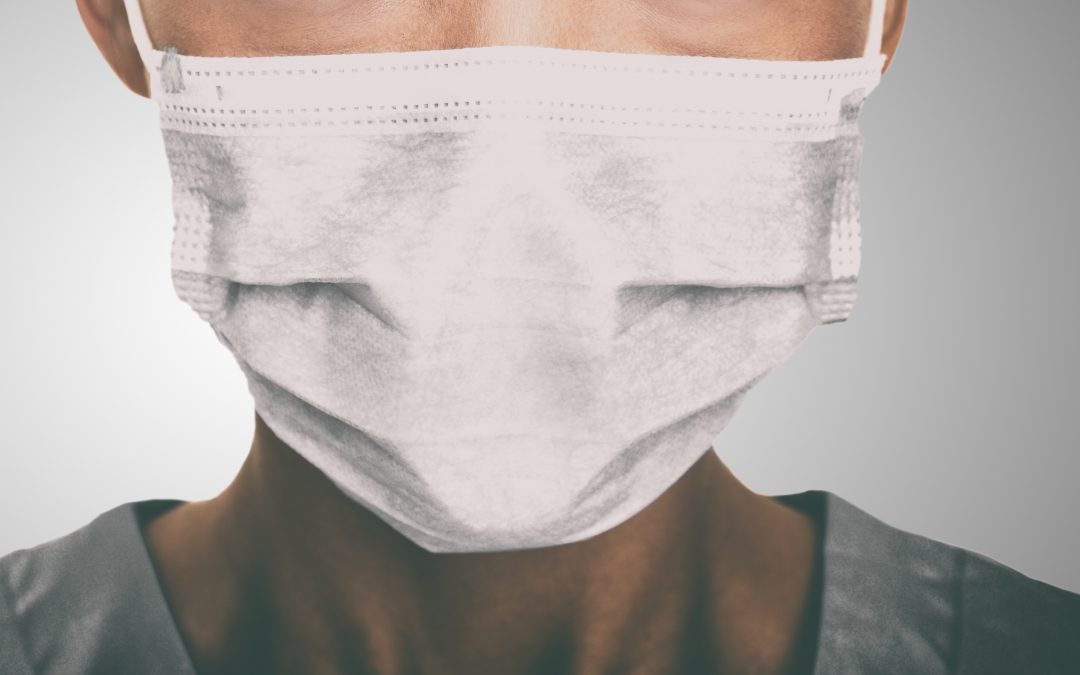Before Covid, wearing a mask in a supermarket in the United States or in Britain might have earned uneasy glances from fellow shoppers. Are you sick, or is there something you’re trying to hide? Now, that is all changing. With the America’s CDC now recommending wearing some sort of face covering, a phenomenon previously perceived as distinctly from Asia is making its way into the cultural norms of the West.
Mask wearing is nothing new in America, though. Looking at a snippit (“Must Wear Masks,” below) from a San Francisco newspaper during the 1918 Spanish Flu, we see proof the mask-wearing was not only normalized but outright mandated. Not wearing a mask could incur a steep fine ($85 to $1,700 in today’s money) or even imprisonment! Perhaps the aversion to wearing masks in the U.S. comes from American memory culture, where a fear of contracting Spanish flu in the early 1900’s prompted universal mask-wearing. Masks could be dredging up painful memories, without people consciously realizing it. Or perhaps it stems from a “Land of the Free” mentality, where feeling averse to government guidance provides a premise for people to disallow such a behavioral change from entering their personal lives. There are several theories.

Walking around a densely populated city in this time of Covid-19, some people, seemingly the older and therefore frequently more vulnerable among us, not uncommonly will move themselves to the side of the sidewalk and allow a fellow walker to pass. Their practice of extremely careful social distancing in public, is an exemplary demonstration of mindfulness through sound behavior. Such mindfulness is further exemplified by Corporate America, where several large pharmacy and supermarket chains accommodate the concerns of older people by opening an hour earlier, and closing an hour later, for age 60+ shoppers only.
But why aren’t young people being as cautious as the old? Numbers show that 20% of confirmed cases between ages 20-44 have been hospitalized, and 2-4% of them treated in the ICU. While young people are at less risk of being treated in the ICU and of dying from the virus, they are not immune and further serve as viral carriers around our old, who make up a striking 31% of all cases, 45% of all hospitalizations, and 80% of deaths. With this data, it makes sense that older people are more cautious. But it also attests to the need for young people to self-preserve, nudging them sharply to wear masks. At the very least, young people, who are still greatly at risk to suffer from this virus though less likely to become fatal casualties, ought to do their part to protect the elderly by wearing a mask. The wearing of masks among young people has become more common since the CDC recommended it, but is it becoming common enough?
The re-emergence of mask-wearing in America is a monumental development in modern public health. Not only does it help prevent the spread of a highly-communicable virus, it also indicates to others that you are thinking about the overall community’s health. In Asia, masks have been worn for decades when one has a cold, has a cold face, is concerned about smog, or even feeling shy about a bit of acne. With an increased awareness of how colds and flus spread in public spaces, we may see that mask wearing is here to stay, even long after this novel coronavirus is gone.
Doing our part to encourage this behavior starts with ourselves, and extends into our community. CSOFT Health Sciences has donated 2,000 masks to Massachusetts General Hospital and essential workers to ensure their safety on the frontlines as they fight this disease for their communities. Rather than looking at mask wearing as an “other” cultural practice, it’s high time for us to adopt it as our own, to protect ourselves, and to protect those at risk in these contagious times. As a WSJ reporter recently reported from Hong Kong, “Not wearing [a mask] is like not wearing pants.”
- Dr. Hope
About CSOFT Health Sciences
CSOFT Health Sciences provides end-to-end medical translations for all phases of the product lifecycle, from pre-clinical to post-launch. We also specialize in market access consulting, medical writing, and CTD/eCTD submissions with the FDA, EMA, and NMPA. Our operations are compliant with ISO 17100 and certified in ISO 9001:2015 and ISO 13485:2016, ensuring our customized solutions meet the rigorous regulatory requirements of global submissions.
About CSOFT
CSOFT International is a leading provider of cross-border communications for enterprises seeking growth in global markets. Our expertise in localization, documentation, and branding encompasses a full range of end-to-end content and consulting services that we deliver in over 250 languages. With a focus in health sciences and smart technology, we work closely with our clients to deliver precision solutions to the challenges of engaging markets, consumers, and regulatory environments worldwide.
